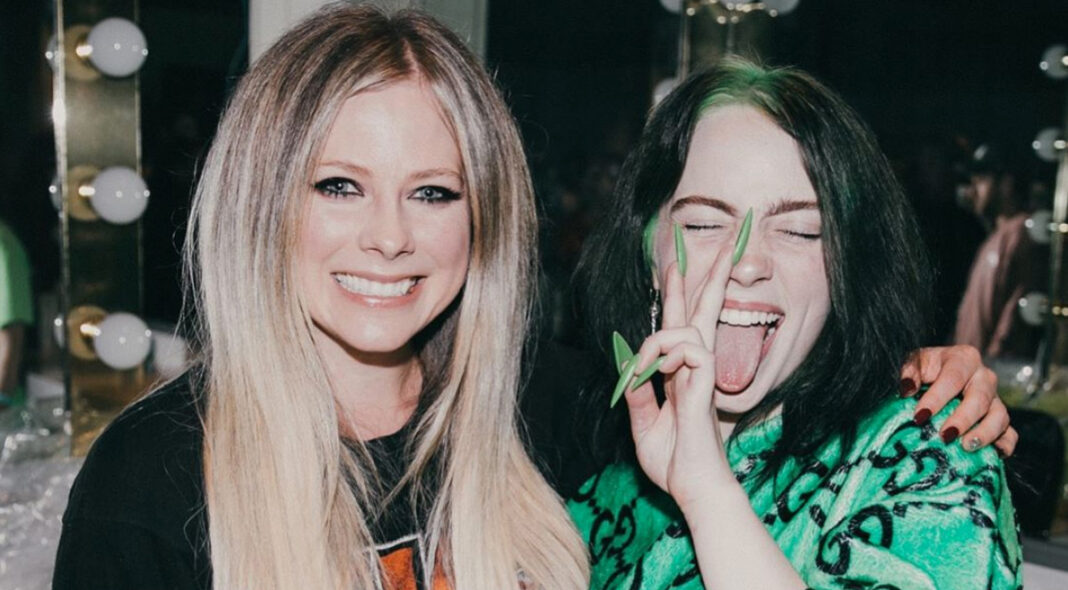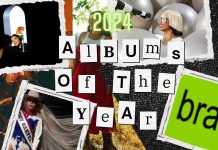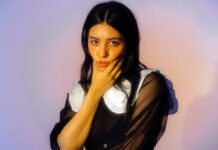18 years ago, shortly after the release of her debut album ‘Let Go’, the then-17-year-old Avril Lavigne was dubbed the “anti-Britney” by the press. Appearing during the pop queen’s reign wearing ties, vests, baggy pants and Converse, the label seemed to fit, but Lavigne rejected the comparison, calling it “stupid”, and protesting, “she’s a human being. God, leave her alone!” long before Chris Crocker did. In an interview with NBC in 2003, Lavigne expanded on her discomfort with the term: “I’m not made up and I’m not being told what to say and how to act, so they have to call me the anti-Britney, which I’m not. I think that’s very rude and very mean. I think it’s a dumb game. It’s just the media putting up those labels.”
In the same interview, journalist Jane Pauley reminds Lavigne that it isn’t just the media: her label and managers are just as guilty. “It’s a business. You’re the product. In order to sell the product, you’ve got to put some kind of label on it,” she tells the teenager, who insists that she does not want that. “In order to position the next big thing, someone has to pronounce the current big thing over,” Pauley adds, and president of Arista Records L.A. Reid interjects to call it an “important marketing ploy”: “We’re guilty of it. And it works. And it has worked quite well with Avril,” he says, in front of her.
The exchange is uncomfortable, reminding the reader just how little agency Lavigne really had over her career. Reviews, while praising her incredible talent, were distracted by her clothes and what they often felt was a tryhard attempt at authenticity. While Lavigne might not have liked being compared to other girls, with alt-pop song ‘Sk8er Boi’, she instantaneously latched onto a percolating mood of the era. Singing about a popular, ballet-dancing girl who fails to see the appeal of a skater boy who may or may not be a stand-in for Avril herself was a surefire way to set herself apart.
In 2019, Billie Eilish, who was only a year old when ‘Let Go’ was released, would put out her first album, ‘When We All Fall Asleep, Where Do We Go?’ after gaining cult status on SoundCloud and with her debut EP, ‘Don’t Smile At Me’. While Eilish’s gorgeous voice and trap beats would get her radio play, it was her style that often got the attention of the press, for better or for worse. With baggy pants, green flames, brightly coloured hair and oversized shirts, Eilish felt like a callback to a simpler time.
In 2017, the 15-year-old told Paper that her choices were deliberate: “I’m really different from a lot of people, and I kind of try to be. I don’t like to follow the rules at all. If somebody tells me to do something, I’ll always do the complete opposite of what they tell me to do. If somebody starts wearing something a certain way, I’ll wear the complete opposite of that,” she said, “I’ve always worn what I wanted to and always said what I wanted to say. I’m super, super out there. I try to dress this much above crazy,” she added, reminiscent of a ‘Complicated’-era Avril. Later, the teenager would add another, more personal reason for her baggy clothes: to avoid scrutiny for her body.
READ MORE: EVERY BILLIE EILISH SONG RANKED
The comparisons between Eilish and Lavigne don’t end at their clothes: both were resolutely teenaged talents, awkward and defiant. While Lavigne struggled with the press, dropping her wallet and apologising for “fiddling” during interviews, Eilish looks away during awkward questions. The pair see their similarities, too: last year, Eilish posted a picture on Instagram with Lavigne. Wearing a bright green Gucci sweater with green hair and inches-long green acrylic nails, Eilish is fangirling, beaming. The caption reads, “THANK YOU FOR MAKING ME WHAT I AM”. She gushed about the artist, “I love Avril Lavigne. I only love her.” Lavigne was similarly emphatic, calling Eilish “talented and cool”, and drawing comparisons with her approach to her style and craft, “my approach was always just like, I’m going to be myself, write the songs that I want to write, dress how I want to dress.”
Lavigne made a world in which we could be receptive to Billie Eilish possible, giving a generation of of alt-girls who might have idolised Courtney Love a decade prior something new to imitate. In the early 00s, Lavigne’s success either inspired a slew of alt-pop artists or created an environment wherein their (often momentary) success was possible. In 2003, British artist Amy Studt, adorned in vintage dresses and striped socks with eyeliner smeared around her eyes, appeared with ‘Misfit’, a not-like-other-girls anthem: “All you girls when/you look into the mirror tell me how do you appear/well/you’re superficial I’m a misfit” she sneered, the video setting her up as a victor against the cruel bullies.
This attitude is difficult to comprehend now, after years of girl-positive feminism and a collapse between subcultures that’s seen the markers of “being alternative” melting into mainstream fashion. But it’s important to remember that back then, there was a divide. It was a time of bottle-blonde socialites, when Paris Hilton and Nicole Richie were starring in The Simple Life and kissing rockstars, when Lindsay Lohan and Britney Spears were falling in and out of clubs all over Hollywood. The motifs of the era, bleached extensions, brightly coloured Louis Vuitton bags, pastel Juicy Couture sweatsuits and tiny dogs, were everywhere.
Ashlee Simpson was the most direct response to the blondes of the era: sister of the very-famous Jessica, her debut album, ‘Autobiography’, was released in 2003. On the album cover, she clutches her straight black hair, staring with eyeliner-ed eyes at the camera. She deliberately sought a route into music that opposed her sister’s, even avoiding her label so as not to, “be like [her]”. While Simpson was insistent in asserting her independence and reinforcing that she’d written the music, The New York Times called it a, “thoroughly calculated package, aiming for the same audience that embraces Avril Lavigne and Pink”.
Not all of the alt-pop girls who followed Avril’s success seemed to be resisting anything, however. The lesser-known and underappreciated alt Canadian Fefe Dobson, the only Black woman artist of that era, started releasing music in her teens, too. She went a lot heavier, with a self-titled album full of rock love songs that she wrote mostly herself. The video for third single ‘Everything’ sees her dressed up in full early-emo regalia, red and black striped gloves, studs and all.
The early-mid 00s were the furthest thing from the “girl power” that the Spice Girls had tried to popularise in the 90s, and that combative streak was often cruel. Even Hayley Williams, now a champion for other women, released ‘Misery Business’ as the alt-teenage frontwoman of Paramore in 2006, a cruel jab at another girl that came straight from her teen diary. She would soon come to regret it and apologise, over and over. In fact, most of these women would come to realise that they actually did like other girls, but the industry set them starkly against one another. P!nk had less of an excuse to release ‘Stupid Girls’ in 2006 when she was 26 years old, a somewhat late rebuttal to those “other girls”: “Maybe if I act like that/(Stupid girl)/flipping my blonde hair back/(Stupid girl) push up my bra like that” she sang, with an accompanying video that mocked the socialites and also…bulimia.
That era was full of less than proud moments. Teenage girls who felt out of place at school and in the music industry had their talents and discomfort taken advantage of by the press, managers and A&R folks who manipulated their confusion to set them against the current moment and jumpstart their careers to line their own pockets. How much of the not-like-other-girls commentary, particularly in the songs that they allegedly wrote, actually came from their heart remains to be seen. But what is more clear is that they were teenagers, unaware of the lasting impact of their words and careers.
However orchestrated the divide between alt-pop and “other girls” may have been, combined with the collapse of genre and subculture, that era created an environment wherein artists like Billie Eilish can thrive in the mainstream. She can have it all, and she can have it without being cruel: green hair and the Bond theme, complex, beautiful pop songs and jean chains, acrylic nails and bloody noses. More than that, she can grace the front cover of Vogue in baggy pants, something that mightn’t have been possible without Lavigne and her imitators in the early-00s.







